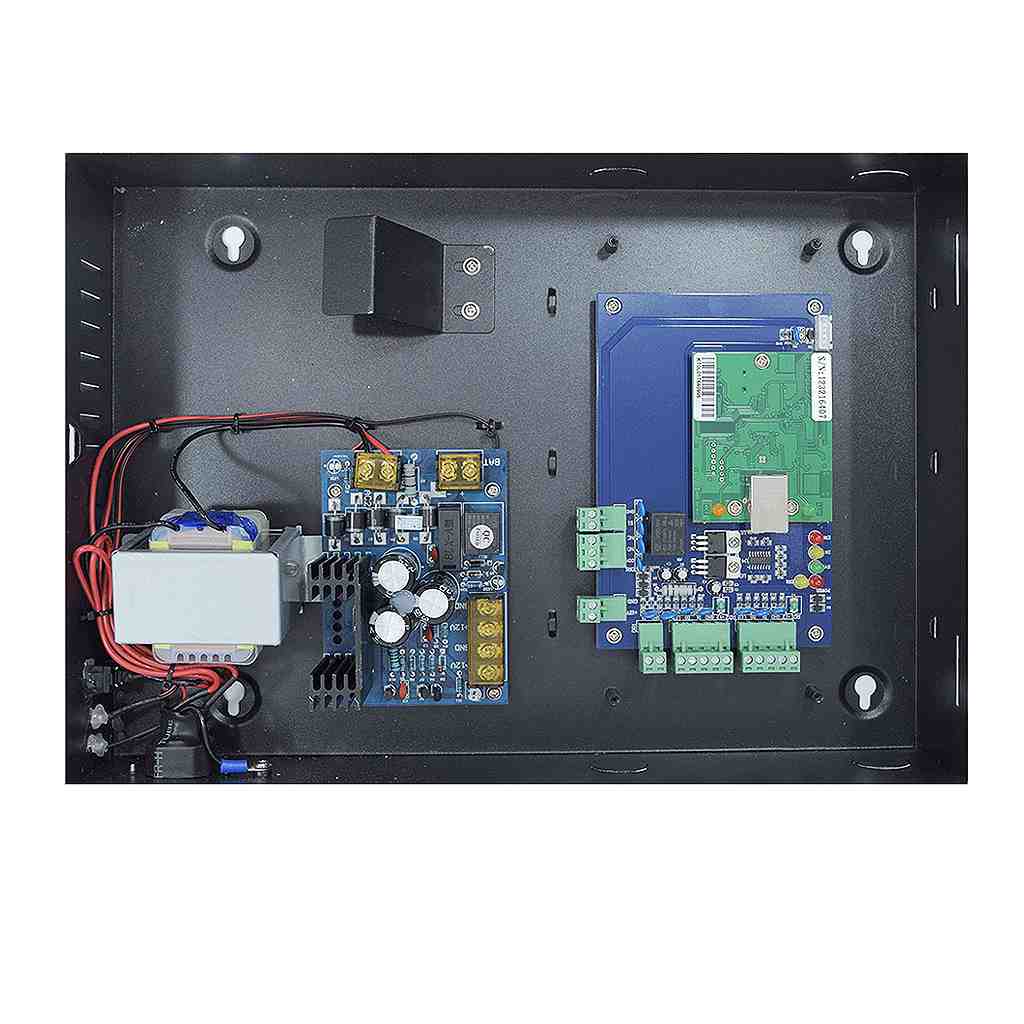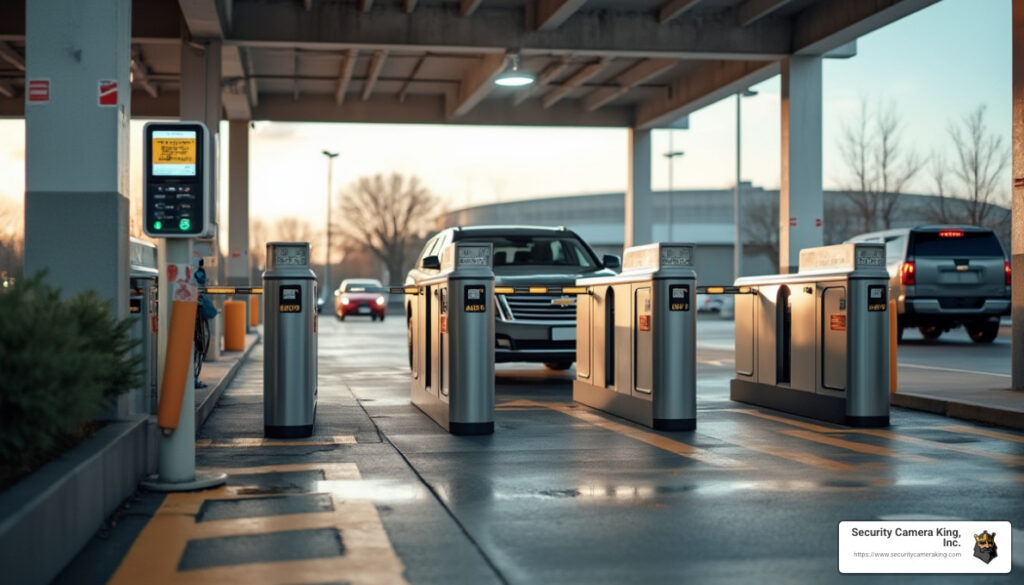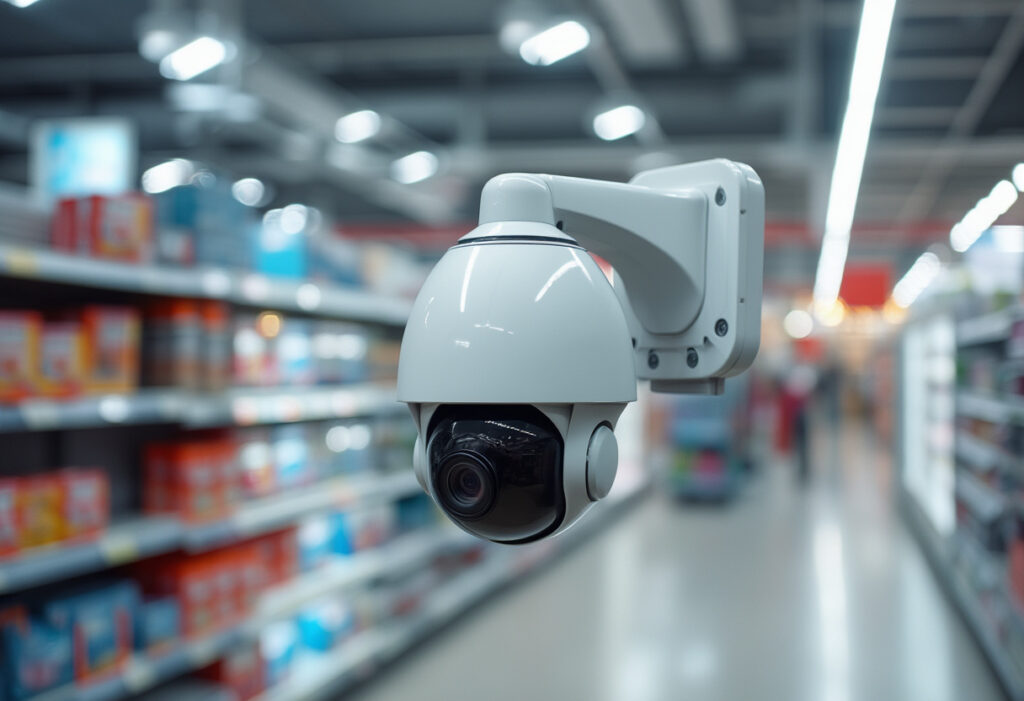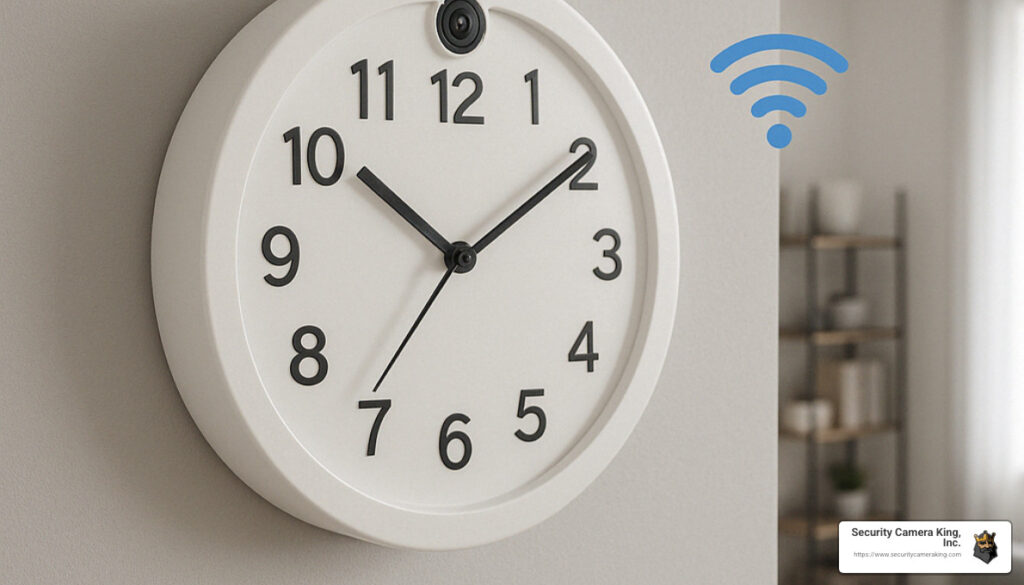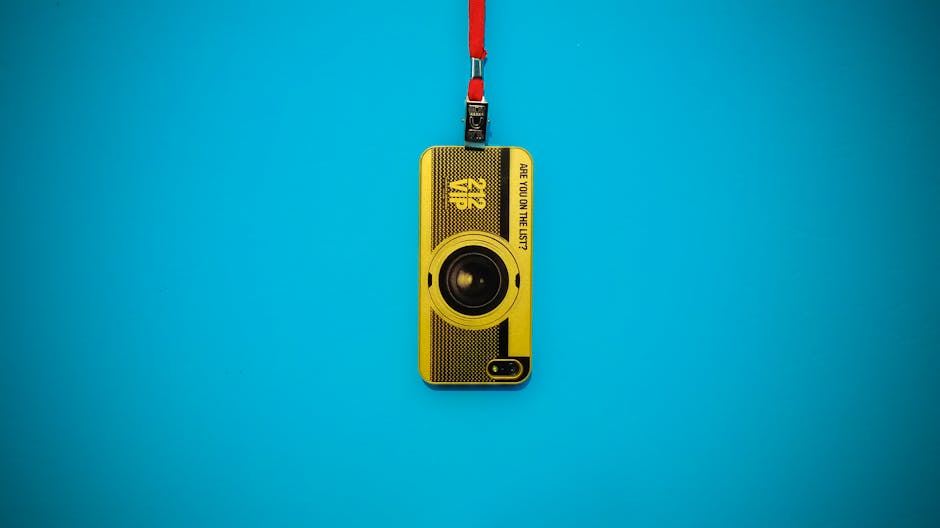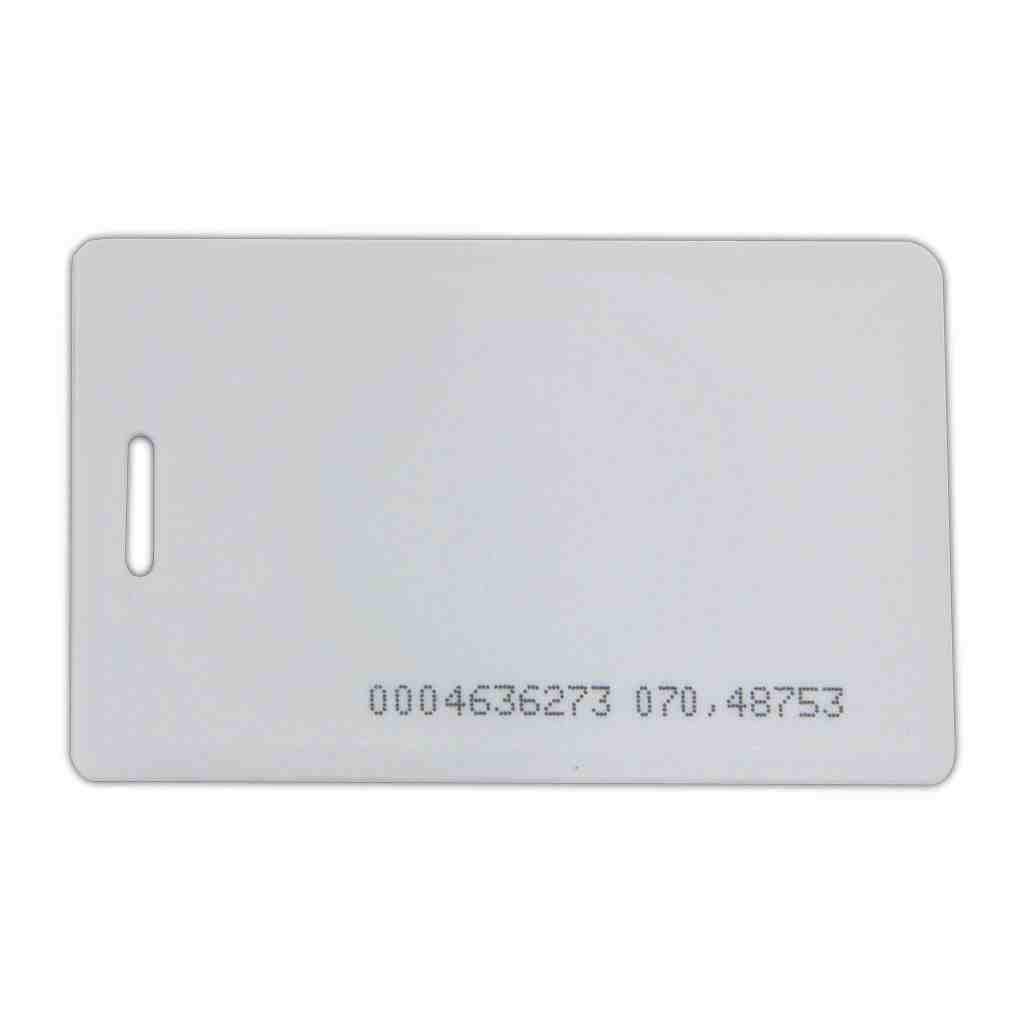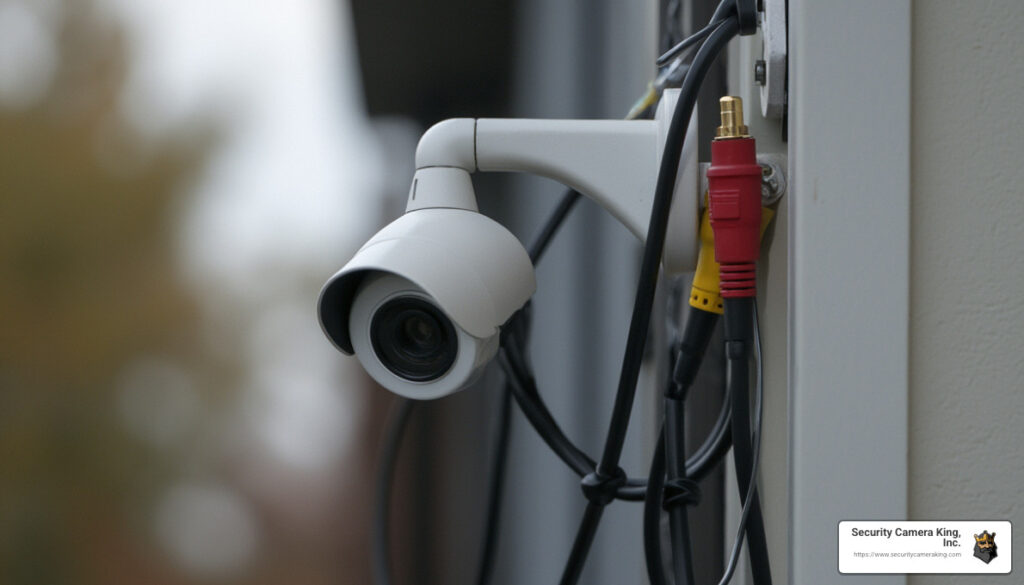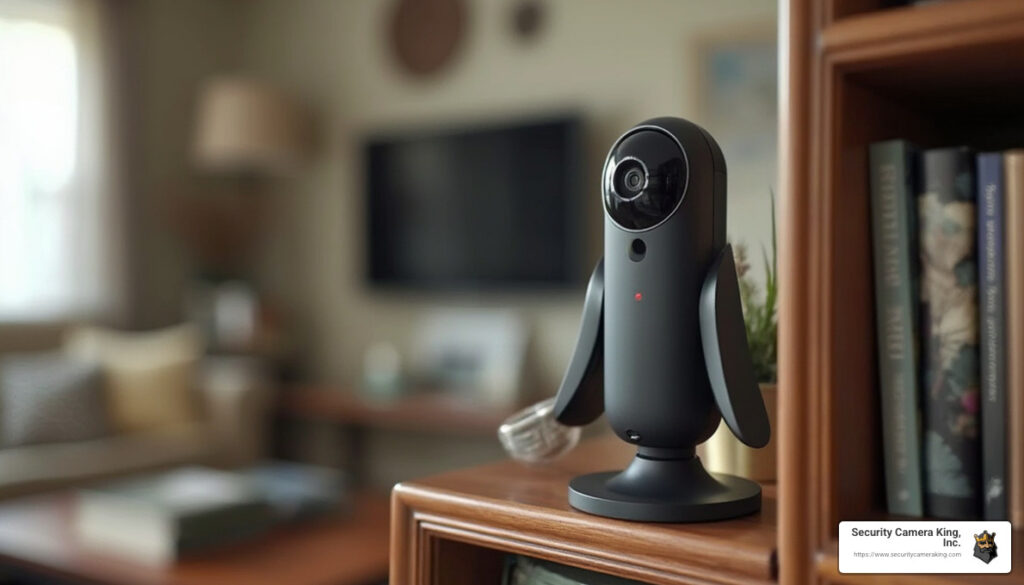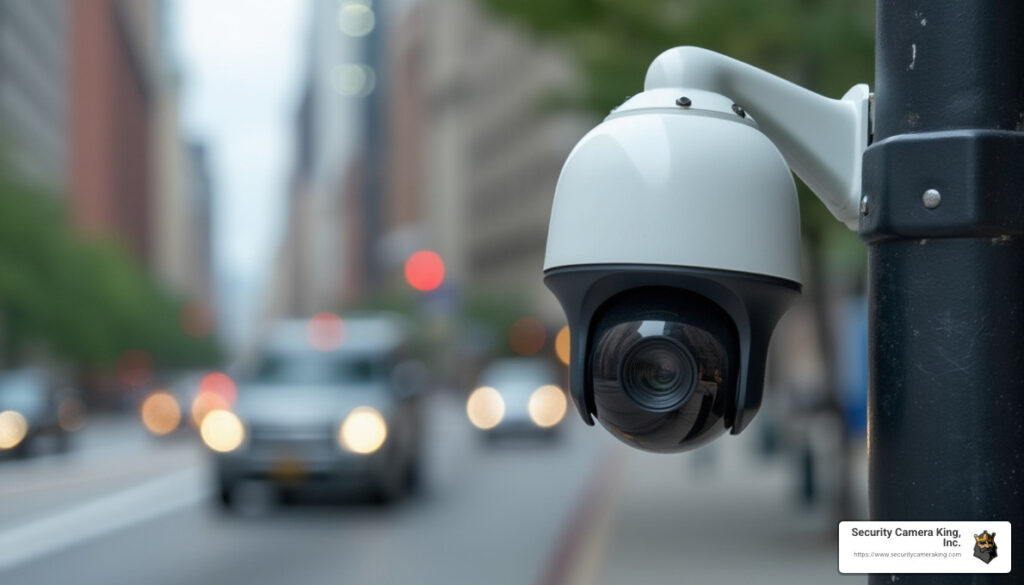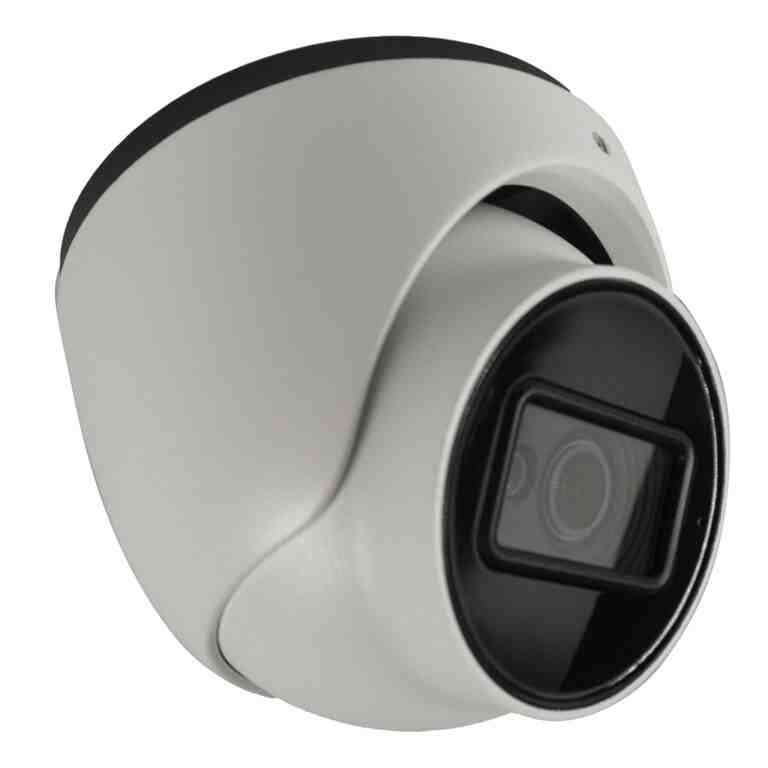how to design access control system: 8 Powerful Steps 2025
Protecting What Matters: Designing Effective Access Control
When it comes to securing your facility, knowing how to design access control system solutions that truly work isn’t just about buying equipment—it’s about creating a thoughtful strategy that protects what matters most to you.
I’ve seen it happen too many times: A business installs an expensive access control system only to find it doesn’t address their actual security needs. That’s why I always start by helping clients understand the complete picture before making any recommendations.
Designing effective access control begins with these essential steps:
First, assess your security goals and vulnerabilities. Walk through your facility and identify what truly needs protection—server rooms with sensitive data, areas with valuable inventory, or spaces with confidential information all require different levels of security.
Next, define who needs access where. Not everyone needs to go everywhere. The receptionist probably doesn’t need access to the IT server room, and the warehouse staff likely don’t need entry to the executive offices. Creating clear access levels prevents unnecessary exposure.
Choosing the right authentication methods makes a huge difference in both security and user experience. Simple PIN codes might work for low-security areas, while biometric verification could be necessary for your most sensitive spaces. Many of our clients find that RFID cards strike a good balance for most applications.
The hardware components you select—readers, controllers, locks, and power supplies—need to work together seamlessly. I’ve helped countless clients who initially purchased incompatible equipment, creating headaches and additional expenses.
Always plan for emergencies and power outages. Will doors lock or open up during a power failure? The answer depends on your specific needs and local fire codes. Some doors should be fail-safe (open uped during power loss), while others should be fail-secure (remain locked).
Integration with other security systems amplifies your protection. When your access control talks to your video surveillance, you get visual verification of who’s using credentials at each entry point.
Establishing solid monitoring and reporting protocols means you’ll know exactly who entered where and when. This creates accountability and provides crucial information if an incident occurs.
Finally, documenting policies and training users ensures everyone understands how to use the system properly. The best technology in the world fails if people prop doors open or share access credentials.
I remember working with a manufacturing client who learned this lesson the hard way. An ex-employee’s access card wasn’t deactivated upon termination, and they returned after hours, accessing sensitive areas. A properly designed system would have prevented this through automatic credential management tied to HR processes.
Every effective access control system balances three critical factors: security, convenience, and cost. While a government facility might need biometric verification at every door, a small retail shop may only need to secure stockrooms and offices. The key is finding the right balance for your specific situation.
I’m Brad Besner SCK, founder of Security Camera King, and I’ve guided thousands of businesses through designing and implementing custom access control systems that protect their assets while maintaining operational efficiency. What I’ve learned is that successful access control isn’t just about keeping the bad guys out—it’s about creating a system that works so naturally your authorized users hardly notice it’s there.

Assess Security Goals & Risks
Let’s face it – understanding what you’re protecting and why should always come before picking out fancy hardware. I was shocked when I first learned that up to 75% of white-collar employees admit to stealing from their employer at least once! This eye-opening statistic reminds us that how to design access control system strategies isn’t just about keeping the bad guys out—it’s also about managing the risks that might be walking your hallways every day.
As security expert Matthew Harper puts it, “Security-in-Depth describes a method of using layered and complementary security controls to deter, detect, delay and deny unauthorized intrusions.” This military-inspired approach gives us a solid foundation for building effective protection.
Before you select a single card reader or electronic lock, take time to conduct a thorough assessment that looks at:
- The environment around your facility (is it in a high-crime area? Subject to extreme weather?)
- Physical weak points like hidden entrances or poorly lit areas
- How your business actually operates day-to-day (hours, traffic patterns)
- Industry regulations you must follow (healthcare, financial, etc.)
- What happens when the power goes out (a critical consideration many overlook)

Identify What Must Be Protected
Not every door deserves the same attention (or budget). Your server room probably needs more protection than the break room, right? When planning how to design access control system components, prioritize based on what’s behind each door:
Your server rooms and data centers contain digital gold – protect them accordingly. HR and financial offices house confidential records that could devastate your company if compromised. Research areas protect your intellectual property and future innovations.
Don’t forget about executive offices where strategic decisions happen, or supply rooms that may contain valuable inventory. Even parking facilities need consideration for employee safety, and elevators and stairwells control movement throughout your building.
I worked with a pharmaceutical client who invested heavily in securing their research labs and drug storage areas, while a banking customer focused on their cash handling rooms and data centers. Your priorities should reflect what’s most valuable to your specific operation.
Determine Who Needs Access & Why
The principle of least privilege should guide your access decisions – give people only what they need, when they need it. Map out your various user groups:
Your employees need different access based on departments, roles, and schedules. Contractors typically need limited-time access to specific areas only. Visitors might need escorts or be restricted to public areas.
Don’t forget about delivery personnel needing access to receiving areas, or cleaning staff who often need after-hours access throughout your facility. And of course, emergency responders must have immediate access during crises.
As one security professional wisely noted in an industry forum, “Giving the user more than one role makes sense to me. Allow assigning permissions both to roles and directly to users, then compute the union.” This flexibility can solve many real-world access challenges.
Quantify Risk & Budget Impact
Let’s talk money – because budget constraints will shape your design choices. On average, standalone systems cost between $1,000-$4,000 per door. If you’re considering biometric readers, expect to spend north of $800 each, while standard card readers typically run $150-$200.
Networked systems offer fantastic capabilities but require more infrastructure. Cloud-based solutions reduce on-site hardware but introduce ongoing subscription costs. When calculating ROI, factor in reduced key replacement costs, improved audit capabilities, and potential insurance premium reductions.
You don’t need electronic controls on every single door. When working with limited budgets (and who isn’t?), focus on securing your most vulnerable or high-traffic areas first. A thoughtful, prioritized approach to how to design access control system components will deliver better security value than spreading resources too thin across your entire facility.
How to Design Access Control System: The 8-Step Framework
Designing an access control system shouldn’t feel like rocket science. I’ve broken down this complex process into eight manageable steps that anyone can follow. Think of this framework as your roadmap to creating a system that keeps the bad guys out while letting the good folks in without daily frustration.

Step 1 – Map Assets, Doors & Flow
Start by walking your property with a notepad (or tablet if you’re fancy). You need to document every place someone could potentially enter or exit.
When I work with clients, we typically begin by mapping all external doors – those main entrances where employees badge in each morning, emergency exits that should only open from inside, loading docks where deliveries arrive, and even that rarely-used roof access hatch. Then we move to internal doors protecting offices, server rooms, and storage areas. Don’t forget about vehicle entry points, perimeter gates, and those turnstiles in your lobby.
For each access point, jot down how many people use it daily, when it’s busiest, and how it fits into your emergency evacuation plan. One client had a beautiful security plan until we realized their emergency exit routes would be blocked during a power outage!
“High foot-traffic areas may benefit from reducing the number of controlled points to avoid bottlenecks,” a security consultant once told me, and truer words were never spoken. Nobody wants employees lined up like it’s Black Friday just to get to their desks.
Quality hardware makes all the difference here. Our Access Control Door Strikes are built to handle thousands of openings without failing – because the most secure lock in the world is useless if it breaks after a month.
Step 2 – Define Roles & Permissions (How to Design Access Control System Around Users)
Your access control system exists to serve people, not the other way around. Role-Based Access Control (RBAC) helps you organize who gets access to what.
Think about your organization’s natural hierarchy – executives, managers, regular staff, contractors, and visitors. Each group needs different levels of access. Your CEO probably needs to access the executive suite, but does the summer intern? Probably not.
I’ve seen companies create ultra-specific roles with microscopic permission differences, turning their access system into a tangled mess. As one security architect wisely advised, “Design roles with small, simple permission sets to avoid unwieldy role bloat.” Keep it straightforward, with clear categories that make sense for your organization.
Don’t forget to plan for the human lifecycle within your company. What happens when someone is hired? Fired? Transferred? Promoted? Your system needs clear processes for each scenario. I’ve seen too many organizations where former employees could still access the building months after leaving because nobody deactivated their credentials!
For physical credentials, our Access Control Cards offer excellent durability and work with virtually any modern reader technology.
Step 3 – Choose Authentication Factors
Authentication comes down to three simple categories: something you have (like a card), something you know (like a PIN), or something you are (like your fingerprint).
Each option has its place. PIN codes are budget-friendly but can be shared or stolen if someone watches you enter it. RFID cards and fobs are convenient but get lost in sofa cushions nationwide every day. Mobile credentials using smartphones are increasingly popular (and harder to lose), while biometrics offer excellent security but at a higher price point.
For areas containing truly sensitive assets or information, consider layering these approaches. As one security expert bluntly put it, “Combining factors such as a PIN, card and biometric scan increases security proportional to the inconvenience introduced.” The trick is finding that sweet spot between security and usability.

Step 4 – Select Hardware & Wiring Topology
Now for the nuts and bolts – literally! Your hardware choices determine what your system can do today and how easily it can grow tomorrow.
Controllers act as the brains of your operation, managing decisions about who gets in where. Readers are what users interact with at each door. Electric locks do the actual securing, while request-to-exit devices let people leave without setting off alarms.
You’ll need to decide between traditional power wiring and more modern Power over Ethernet (PoE), which carries both power and data over a single cable. Consider communication protocols too – older Wiegand technology is giving way to more secure OSDP standards.
One system architect I know recommends to “embed the RBAC logic in your codebase to avoid external latency in performance-sensitive paths.” In plain English: make sure your hardware can handle your access rules without slowing down door opening times.
Our Access Control Panels and Access Control Readers are designed with both current needs and future expansion in mind.
Step 5 – Integrate Video, Alarms & IoT
Modern security systems work best when they talk to each other. When someone badges into your warehouse at 3 AM, wouldn’t you want cameras to automatically capture that event? Or when an alarm triggers, wouldn’t you want the access system to lock down sensitive areas?
Integration creates a more complete security picture. Connect your access control with video surveillance to see who actually used that credential. Link with visitor management systems so temporary passes automatically expire. Some clients even connect with building automation so lights and HVAC adjust based on occupancy.
For IoT devices, follow the “Trust no one: IoT security” approach. Every connected device is a potential entry point for hackers, so implement zero-trust principles for anything connecting to your network.
Step 6 – Plan Power, Backup & Fail Modes
Power planning isn’t the sexiest part of security design, but it might be the most important. When the lights go out, will your doors stay secure?
Start with dedicated electrical circuits for your access control equipment. Then add backup power – UPS systems for controllers and battery backups for locks. Most importantly, decide which doors should fail-safe (open up during power loss) or fail-secure (stay locked no matter what).
This planning isn’t optional – it’s often legally required. Fire codes typically mandate that egress paths remain accessible during emergencies, meaning exterior doors frequently must fail-safe. I once worked with a hospital that had to completely redesign their system after a fire marshal inspection found emergency exits would remain locked during power outages.
Our Access Control Power Supplies include battery backup options specifically designed for these scenarios.
Step 7 – Configure Software, Monitoring & Reporting
The software layer is where your system truly comes alive. This is where you’ll set up those access rules, time schedules, and special conditions like anti-passback (preventing someone from passing their card back to a friend).
Good software provides real-time monitoring – showing you who’s where, alerting you to unusual access attempts, and maintaining detailed audit trails. These logs aren’t just for security – they’re increasingly important for compliance with various regulations.
“Anything that you can automate reduces the burden on your staff, reduces potential errors, and increases business efficiency,” notes one consultant I regularly work with. Consider integrating with your HR system so access rights automatically update when someone joins, leaves, or changes roles.
For a deeper dive into available options, check out our guide to Access Control Software Solutions.
Step 8 – Test, Commission & Train – Finalizing How to Design Access Control System
Never, ever skip testing. I repeat: never skip testing. Before going live, verify every component works as expected – both individually and as a system.
Start with factory testing to confirm hardware functionality, then conduct site testing once everything’s installed. Get actual users involved to validate that the system meets their daily needs. Finally, stress test by simulating high-traffic periods or emergency scenarios.
Document everything thoroughly – from system diagrams to equipment locations to maintenance procedures. Future you (or your replacement) will thank present you for this effort.
Most importantly, train your people. The best system in the world fails if users don’t understand how to use it properly. Hold hands-on sessions covering proper credential use, what to do during emergencies, and how to report suspicious activities. Your employees are both your greatest security asset and your biggest potential vulnerability.
By following these eight steps, you’ll create an access control system that provides genuine security without becoming a daily headache for users. And if you need help along the way, that’s what we’re here for.
Integrating & Scaling Your System for the Future
When I talk with clients about how to design access control system solutions, I always emphasize planning for tomorrow, not just today. Your business will grow and change—shouldn’t your security system be ready to grow with you?

Building for Expansion
Think of your access control system like a good investment portfolio—diversified and ready for whatever the future brings. Start by selecting controllers with extra capacity built in. These might cost a bit more upfront, but you’ll thank yourself later when adding that new wing doesn’t require a complete system overhaul.
Software with tiered licensing offers another smart path to growth. You can start with what you need today, knowing you can open up additional features or door capacity as your needs evolve. This approach protects your initial investment while providing a clear upgrade path.
I’ve seen too many businesses paint themselves into a corner with proprietary systems. Open standards and protocols give you freedom to mix and match components from different manufacturers or even switch vendors entirely if needed. It’s like insurance against a single manufacturer discontinuing the product line you’ve invested in.
When running cables, always plan for extra capacity in your pathways. That empty conduit might seem wasteful today, but it becomes invaluable when you need to add connections later. Trust me—future you will be grateful for this foresight.
Documentation becomes your roadmap for expansion. Keep detailed records of your current setup, including cable runs, IP addresses, and configuration settings. This makes future additions smoother and helps new IT staff understand the system they’re inheriting.
For compatible expansion options that won’t break your existing setup, our Access Control Accessories are designed with seamless integration in mind.
Cyber-Hardening Networked Access Control
Remember when access control was just about physical locks and keys? Those simpler days are gone. Today’s networked systems offer tremendous benefits but also create potential cyber vulnerabilities that need addressing.
Strong encryption should protect all communications between your system components. This isn’t just good practice—it’s essential protection against attackers who might try to intercept credentials or commands traveling across your network.
Your security system deserves its own network neighborhood. Isolating access control on dedicated VLANs keeps this critical infrastructure separate from general business traffic, reducing exposure to potential threats from other networked devices.
The security landscape changes constantly, which is why regular firmware and software updates are non-negotiable. These updates often patch newly finded vulnerabilities that could otherwise leave your system exposed. Set a regular schedule for checking and applying updates—quarterly at minimum.
Administrator access to your system should require strong authentication measures. Multi-factor authentication adds an extra layer of protection beyond just passwords, ensuring that even if credentials are compromised, unauthorized access remains difficult.
Finally, don’t just assume your system is secure—verify it. Regular vulnerability scanning and security assessments help identify weak points before they can be exploited. As one security researcher noted, “Counterexamples returned by formal verification can provide designers of access control hardware with valuable information on possible attack channels, allowing them to perform pinpoint fixes.”
By building with expansion in mind and taking cybersecurity seriously, you’re not just installing an access control system—you’re creating a security foundation that will serve your organization reliably for years to come. The extra thought you put in today saves headaches, expenses, and potential security breaches tomorrow.
Compliance, Policies, and Training
Let’s face it – even the most sophisticated access control system won’t protect your facility if nobody follows the rules. The human element is often the weakest link in security, which is why thoughtful policies and thorough training are just as important as the technology itself.
When I work with clients on how to design access control system solutions, I always emphasize that compliance isn’t just about checking boxes—it’s about creating a security culture that everyone understands and accepts.
Writing Inclusive & Emergency Policies
Your access control policies should work for everyone who needs legitimate access to your facility. This means thinking beyond the “average” user.
ADA compliance isn’t optional—it’s essential and legally required. Consider mounting card readers at wheelchair-accessible heights, programming longer door hold times for those with mobility challenges, and providing alternative entry methods when needed. One client of mine installed both traditional card readers and voice-activated entry systems for employees with limited hand mobility, dramatically improving their daily experience.
Emergency override procedures deserve special attention. When seconds count during a crisis, first responders can’t be fumbling with unfamiliar access systems. Work directly with local fire and police departments to establish clear protocols for emergency access, and then test these procedures regularly.
Evacuation planning must account for how your access control system behaves during emergencies. All exit paths should automatically open up during fire alarms (fail-safe), but you’ll also need to consider how to maintain security in other emergency scenarios where evacuation isn’t needed.
Inclusive design goes beyond legal requirements—it shows respect for all your team members and visitors. As one security director told me, “When we made our access system more inclusive, we finded benefits for everyone, not just those with disabilities.”

Continuous Education Programs
Even perfect technology fails when users don’t understand it. That’s why ongoing training makes all the difference between security theater and actual security.
Your administrator certification program should be comprehensive, covering not just the technical operation of your system but also security principles, threat awareness, and compliance requirements. These individuals are your security gatekeepers—invest in their knowledge.
Don’t forget regular user refreshers, especially after making system changes. People forget procedures they don’t use daily, and a quick quarterly reminder can prevent bad habits from forming. Make these sessions engaging and brief—nobody remembers information delivered in a boring two-hour lecture.
Security awareness training should address common vulnerabilities like tailgating (following authorized personnel through doors) and credential sharing. One effective approach I’ve seen is using real examples from your own facility—”Last Tuesday, three unauthorized people entered through the loading dock because someone held the door open.” Specific examples hit home much more effectively than vague warnings.
With phishing awareness becoming increasingly important, teach your team about social engineering tactics targeting physical access. Bad actors may call pretending to be new employees who “forgot their badge” or send emails requesting credential information for “system updates.” As one security expert put it, “Security is not a code-driven effort and must incorporate end-user and stakeholder input.”
Training isn’t a one-time event but an ongoing conversation. The most secure facilities I’ve worked with make security awareness part of their culture—they celebrate when employees report security concerns rather than treating security as an inconvenience. When designing how to design access control system plans, building this positive security culture should be just as important as selecting the right hardware.
Maintaining, Auditing, and Upgrading
Like any critical system, your access control solution needs regular care to stay effective over time. Think of it as maintaining a car – neglect the oil changes, and eventually, you’ll find yourself stranded on the roadside at the worst possible moment.
“I’ve seen million-dollar systems fail because nobody checked the backup batteries for three years,” a client once told me. Don’t let that be your story.
Scheduled Audits & Reviews
Regular check-ups keep your system healthy and identify potential issues before they become problems. Quarterly permission reviews should be on your calendar – these ensure that access rights still match current job responsibilities. It’s surprising how quickly these can drift out of sync as people change roles or departments.
Your annual risk assessment deserves serious attention. This is your chance to step back and look at the big picture: Has your facility changed? Have new threats emerged? Are there technologies that could strengthen your security posture?
Credential audits might sound tedious, but they’re essential. In one memorable case, we finded a manufacturing facility had 127 active access cards for employees who no longer worked there – a significant security hole that took just hours to fix once identified.
Don’t forget the physical components. Door hardware inspections should check for wear, tampering, or damage. Magnetic locks lose strength over time, and strike plates can work loose with repeated use.
“Regularly review and update the solution” isn’t just consultant-speak – it’s the difference between a system that protects you and one that gives a false sense of security. Our Access Control Installation Services include maintenance programs designed to keep your system in peak condition without requiring your team to become security experts.
End-of-Life & Retrofit Strategies
Technology evolves, and eventually, parts of your system will need updating. Planning for this evolution saves money and prevents emergency replacements when components fail.
Technology migration paths should be part of your long-term strategy. For example, many organizations are moving from traditional card readers to mobile credentials – but this transition works best when planned, not forced by equipment failure.
Phased upgrades allow you to spread costs over time while minimizing disruption. Perhaps you update your main entrance this year, executive offices next year, and warehouse access the following year.
Smart budget forecasting prevents unpleasant surprises. Most access control components have predictable lifespans – readers typically last 7-10 years, while controllers might go 10-15 years before needing replacement.
Whenever possible, look for backward compatibility when upgrading. Some modern readers can still accept older credentials, allowing you to phase in new technology without immediately replacing every employee’s access card.
“Future-proofing via reserve studies and scalability planning” might sound like corporate jargon, but it’s actually about being practical. Setting aside small amounts in your annual budget for eventual system updates is far easier than finding a large lump sum when your system suddenly fails.

How to design access control system planning doesn’t end at installation – it’s an ongoing process that includes maintenance, evaluation, and strategic upgrades. The most successful systems evolve alongside your organization, providing the right balance of security and accessibility year after year.
Frequently Asked Questions about Access Control Design
How many doors should actually be controlled?
One of the most common questions I hear from clients is about which doors truly need electronic access control. The reality is that not every door in your facility requires this level of security—and trying to control too many can actually dilute your security efforts while dramatically increasing costs.
Focus your access control strategy on the doors that matter most. External entry points should typically be your first priority, as they represent your first line of defense against unauthorized access. Next, consider high-security internal areas like server rooms or research labs where your most valuable assets or information reside.
I recently worked with a manufacturing client who initially wanted to control every door in their facility—all 87 of them! After our security assessment, we narrowed it down to just 24 critical access points, saving them over $60,000 while actually improving their overall security posture.
“Not every door in a building needs to be controlled and monitored; prioritizing the most vulnerable spaces can help manage costs and improve security effectiveness,” as security consultant Mark Davidson often reminds his clients.
What happens to locks during a power outage?
This question touches on a critical safety consideration that’s often overlooked until it’s too late. The answer depends entirely on how your locks are configured:
Fail-safe locks automatically open up when they lose power. These are typically installed on emergency exit routes and paths of egress to ensure people can safely evacuate during emergencies. Building and fire codes often require fail-safe configurations on certain doors.
Fail-secure locks remain locked when power is lost. These are used for high-security areas where maintaining protection even during outages is essential.
Battery backups provide a middle ground, maintaining normal operation during brief outages. For longer power disruptions, always have mechanical key override procedures documented and accessible to authorized personnel. One hospital I worked with learned this lesson the hard way when a power outage left staff temporarily unable to access medication storage—a situation we quickly remedied in their system redesign.
Can I keep my existing cards when upgrading readers?
Good news—you often can keep your existing credentials when upgrading your system, though it depends on what technology you’re currently using.
If you have traditional 125 kHz proximity cards (the most common type), many modern systems can still read these while also supporting newer technologies. However, these older cards offer minimal security and are relatively easy to clone.
For organizations using 13.56 MHz smart cards, you’re in better shape. These offer significantly improved security and are more likely to be compatible with newer systems. During a recent university upgrade project, we were able to preserve all 4,000+ existing smart cards while enhancing their system capabilities.
Mobile credentials represent the newest frontier, allowing employees to use their smartphones instead of physical cards. While this typically requires new readers, it eliminates the ongoing cost and management of physical cards entirely.
When planning your upgrade, I always recommend conducting a thorough credential audit first. This helps identify exactly what you have in circulation and develops a migration strategy that minimizes disruption. One manufacturing client successfully transitioned from old proximity cards to mobile credentials over six months, with both systems running in parallel during the transition period.
Your access control system is only as secure as its weakest component—sometimes an upgrade to more secure credentials is worth the investment, even if it means replacing cards.
For more information about our complete range of access control solutions, visit our More info about access control products page.
Conclusion
Designing an effective access control system is a bit like creating a good recipe—it needs the right balance of ingredients to work perfectly. Throughout this guide, we’ve walked through how to blend security, convenience, and cost considerations into a system that truly protects what matters to you.
How to design access control system approaches should always be custom to your unique situation. The small medical office with sensitive patient records has very different needs than a manufacturing facility with expensive equipment and materials. What works brilliantly for one might be completely impractical for another.
I’ve seen organizations spend thousands on sophisticated biometric systems they didn’t need, while others tried to cut corners with basic locks when they really needed comprehensive electronic access control. Finding that sweet spot is what makes all the difference.
The most successful systems I’ve helped implement have one thing in common: they brought everyone to the table during planning. Security teams understand threats, IT knows networking requirements, facilities managers understand building constraints, and end users can tell you what will work in their daily routines. When these perspectives come together, magic happens.
Your access control system isn’t something you install and forget. It’s a living system that needs to grow and adapt as your organization changes. New threats emerge, technologies advance, and your business evolves—your security strategy should keep pace with all of this.
Here at Security Camera King, we’re passionate about creating security solutions that don’t just work today but continue serving you for years to come. Our team in Boca Raton, FL doesn’t disappear after installation. We’re here to provide ongoing support, answer questions, and help you adapt your system as your needs change.
Whether you’re just starting to explore options or ready to upgrade an aging system, we’d love to help you create an access control solution that perfectly fits your world. For our complete range of reliable, value-driven access control products, visit our access control products page or reach out to our friendly team today.
Security isn’t just about keeping bad things out—it’s about creating peace of mind so you can focus on what matters most. That’s what drives us every day.

